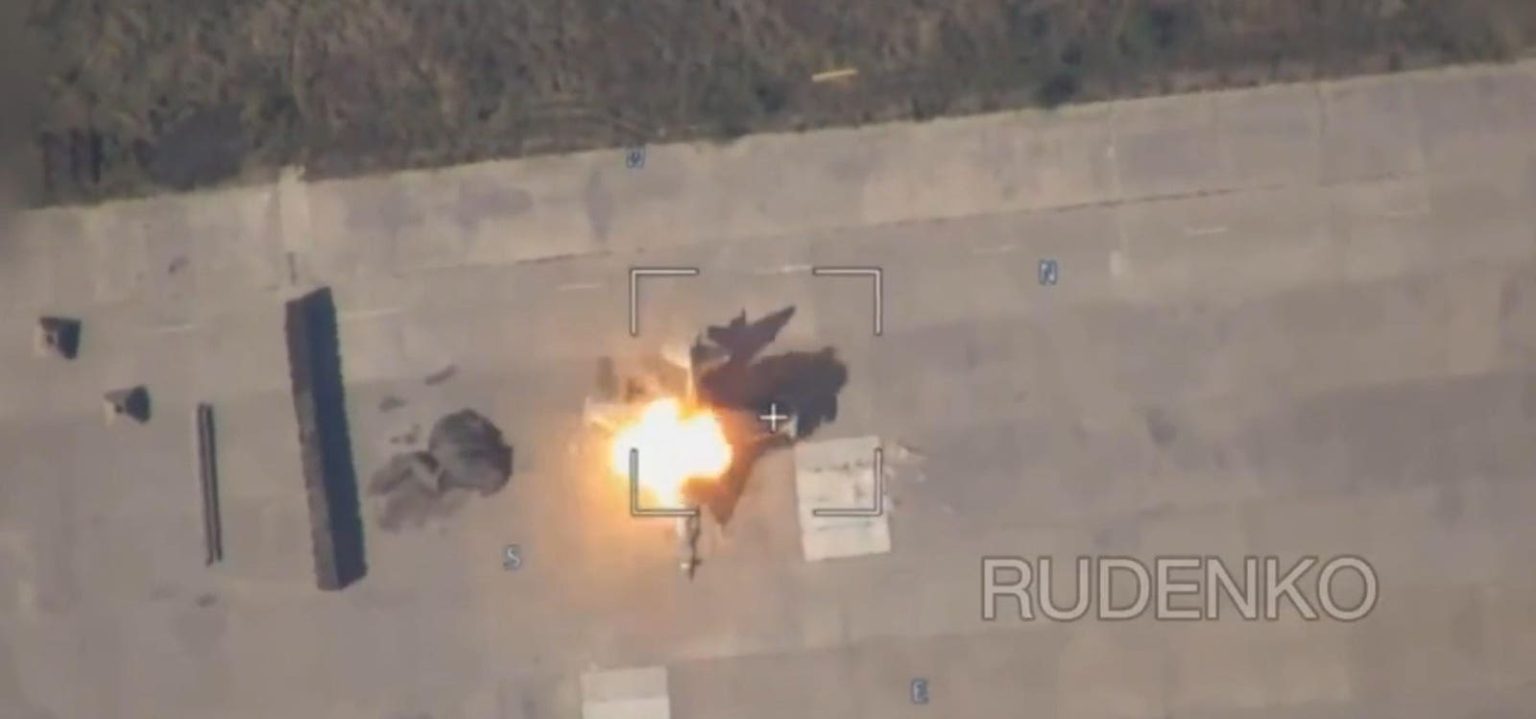One of Russia’s explosives-laden Lancet drones has knocked out a Ukrainian air force Sukhoi Su-25 attack jet on the ground at Dolgintsevo air base near Kryvyi Rih.
It’s the second drone strike in the span of three weeks on a Ukrainian warplane parked at Dolgintsevo. Unless the Su-25 was a derelict airframe the Ukrainians staged as a decoy, then it’s evident Kyiv’s air force has failed to learn from the Sept. 19 strike that damaged or destroyed a Mikoyan MiG-29.
A video from a second Russian drone captured the moment of impact as a Lancet zoomed in to strike the Su-25, which was sitting in the open at Dolgintsevo in broad daylight.
The Kryvyi Rih air base is 45 miles from the front line in southern Ukraine. That means the Lancet in the strike was a new, farther-flying Product 53 drone with a 45-mile range, rather than an older Product 51 with a 25-mile range.
It should be evident by now that the Product 53 is a serious threat to Ukrainian air force regiments at airfields within 45 miles of the front line. It also should be evident that whatever air-defenses the air force has staged at its most forward bases are inadequate.
Not only are the 25-pound Lancets getting through, the surveillance drones that monitor their strikes also are operating with impunity.
There still is time and opportunity for the Ukrainian air force to adapt. Losing one MiG and one Sukhoi isn’t calamitous: Ukraine’s foreign allies have pledged enough replacement MiG-29s and Su-25s to make good combat losses, including recent losses to drones.
And recall that Kyiv’s air arm is adept at dispersing its roughly 100 front-line jets in order to evade Russian bombardment: that’s how the flying regiments have survived these 21 months since Russia widened its war on Ukraine.
But air force commanders clearly have optimized their dispersal methods to mitigate the threat from long-range missiles, which Ukrainian or NATO intelligence can detect several minutes before impact. A small drone winging in on a one-way sortie from just 45 miles away might not give much, or any, advance notice.
The Ukrainians must hide their warplanes while they’re idle—the whole time they’re idle. They must also boost the short-range air-defenses over their most forward bases.
There are no lulls, no breaks, no mornings or afternoons where Russian munitions aren’t a threat to Ukraine’s warplanes. If the Ukrainians don’t internalize this new truth, they might continue to lose precious jets to disposable drones.
Read the full article here





